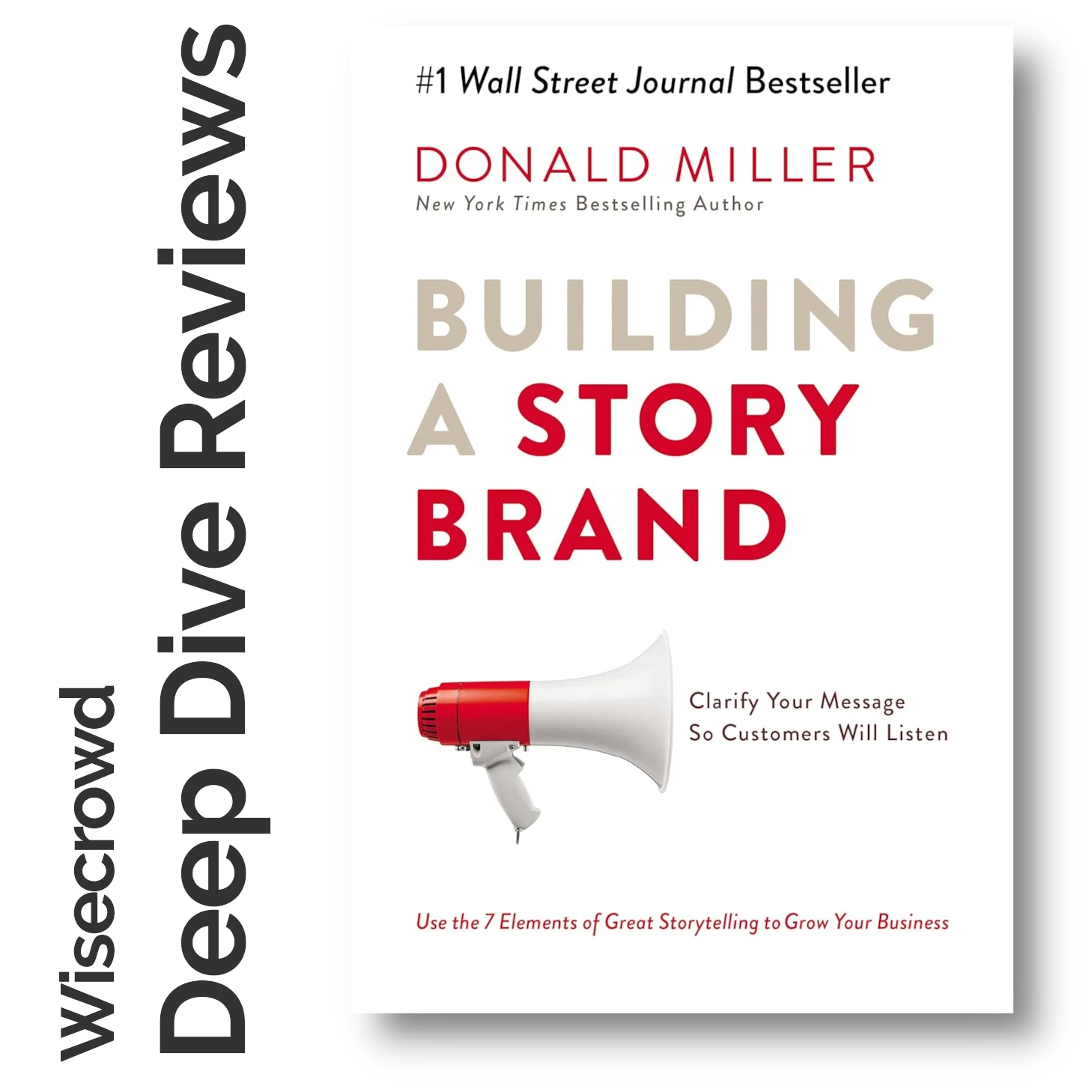Here’s an in-depth look into Building a StoryBrand: Clarify Your Message So Customers Will Listen by Donald Miller.
This book has become a favorite among marketing professionals and business owners looking to revamp their messaging by drawing from storytelling principles. Here’s what you can expect from Miller’s approach, which has been widely praised for its practicality and clarity.
Core Idea
The central premise of Building a StoryBrand is refreshingly straightforward: your customers are the heroes of the story, not your brand. Miller insists that businesses should position their customers at the heart of their messaging. This shift requires a clear, focused message that speaks directly to customer needs, pain points, and aspirations rather than the company’s history or achievements. By framing the brand as a “guide” helping customers overcome challenges and reach their goals, Miller believes companies can build trust, simplify their messaging, and ultimately drive conversions.

Key Framework: The StoryBrand 7-Part Framework
Miller’s StoryBrand 7-Part Framework is the backbone of his approach, and he walks readers through this structure, which closely mirrors the hero’s journey narrative commonly used in fiction and film. Here’s a quick breakdown of the framework:
- Character: Identify what your customer wants and define them as the “hero.”
- Problem: Define the problem the hero is facing.
- Guide: Position your brand as the guide, not the hero, offering a solution.
- Plan: Provide a clear plan or process to help the customer overcome the problem.
- Call to Action: Use strong calls to action to guide the customer toward a solution.
- Avoid Failure: Highlight the risks of not taking action or choosing a different path.
- Success: Illustrate the positive outcome if they choose your brand.
Each component of the framework addresses common communication gaps in brand messaging, and Miller gives specific examples that resonate across industries, from tech companies to personal service brands. This framework is a valuable guide for crafting marketing that resonates emotionally and connects with customers on a human level.
Practical Takeaways
- Simplify and Streamline Messaging: Miller emphasizes that customers are flooded with information and will quickly dismiss a message that feels too complex or self-focused. The StoryBrand framework keeps things streamlined, ensuring that messaging is clear and memorable.
- Speak to the Transformation: Effective messaging doesn’t just focus on features or benefits but rather on the transformation customers will experience. Miller suggests vividly illustrating this transformation, allowing customers to see themselves achieving their goals through your brand.
- Craft a Call to Action with Urgency: Miller notes that vague or absent calls to action are a frequent issue in brand messaging. By creating a clear, strong call to action, companies can boost engagement and improve conversions significantly.
- Use Storytelling to Create Emotional Connection: Humans are wired for stories, and when brands use storytelling frameworks, customers are more likely to emotionally connect with them. Miller’s approach is reminiscent of storytelling tactics used in blockbuster films—simple, purposeful, and powerful.
Standout Examples
One of the strongest aspects of Building a StoryBrand is Miller’s use of real-life examples and case studies, many drawn from his consulting experiences. He examines various brand messages—both successes and missteps—demonstrating the impact of positioning, clarity, and customer-centric messaging. A favorite example is Apple, where Miller highlights how Apple’s messaging rarely fixates on product specs but instead conveys how using the product will make customers’ lives better. He also references brands like Coca-Cola, which consistently ties its messaging to joy and community, reflecting a clear understanding of its audience’s emotional needs.
Critique
While the StoryBrand framework is undoubtedly effective, some critics argue that it might oversimplify complex branding needs or feel repetitive for those familiar with basic storytelling structures. Additionally, those in highly specialized or B2B sectors may find Miller’s approach somewhat generic and may need to adapt the framework to suit more niche markets. However, Miller’s central message—clarify, simplify, and make it about the customer—transcends these limitations and can still serve as a valuable tool with minor adjustments.
Who Should Read This Book?
Building a StoryBrand is ideal for small business owners, marketers, brand strategists, and entrepreneurs who want a straightforward, actionable method to enhance their messaging. Its appeal lies in its accessibility—Miller strips away jargon and provides an easy-to-follow, adaptable framework. For those already familiar with branding principles, it might serve as a refresher, but its real strength is in the application of storytelling to craft effective, customer-focused messaging.
Complementary Reads
- Made to Stick by Chip and Dan Heath – This book dives deeper into the psychology of what makes ideas “sticky” and complements StoryBrand’s messaging strategies.
- Start with Why by Simon Sinek – A classic that pairs well with Miller’s work for understanding the “why” behind brand messaging.
Final Verdict
Donald Miller’s Building a StoryBrand is a no-nonsense, impactful read that demystifies brand messaging with a timeless narrative approach. By making the customer the hero of the story and focusing on their journey, the StoryBrand framework offers businesses of any size an actionable toolkit to connect with audiences on an emotional level, driving trust and engagement. While some might find the advice familiar, Miller’s execution is refreshing, and his ability to make complex ideas feel simple is commendable. For anyone looking to clarify their message and boost brand impact, Building a StoryBrand is worth the read.
– AFFILIATE DISCLOSURE
The Wisecrowd Education Series is reader-supported and we hope to earn an affiliate commission.
We will never recommend a product or a book without doing our research. The team at Wisecrowd reads every book and uses every tool that appears in our recommendations. If we do our job well, and deliver to you (faithful reader) tools and products that improve your life, then we have done our job.


